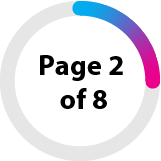Books
As a frame of reference, you will be familiar with textbooks used at GSCE and A Level. At university you will use a wide range of books from textbooks which are written specifically for undergraduate students who are studying a university and have not yet finished their degree, to the specialised works of advanced academic researchers who have been working in academic institutions for some time.
These books may be available in two formats: print or electronic. Irrespective of format, books will have a number of standard features. Understanding these features will help you identify content relevant to your studies. Often you will not be expected to read a single book cover to cover but rather look at sections of several books and extract information relevant to your work.
There will be a title on the front cover, author(s) or editor information and possibly edition and publisher information. Some of these features are discussed in the section on Reading Lists.
Within the first few pages of the book you will discover the contents page. This outlines the structure of the book with chapter breakdown and page numbers to assist with orientation to the relevant section.
The bibliography or reference list usually appears at the back of the book and will contain a list of all sources used by the authors in the writing of the book.
Publisher information is usually found in the initial pages of the book. It is here that you will identify who the publisher is, place and date of publication. This information may appear with a copyright symbol.
At the back of the book there may be an index. This contains useful information about key concepts, names and dates relating to the subject matter of the book. It is always helpful to use the index to home in on your topic.
Some books may contain a list of abbreviations and definitions of specific terms. This may come under the heading of glossary or abbreviations and may appear at the front or the back of the book.
Take a look inside this ebook and see how many of the features you can find that have been mentioned above.
Print book
- touch
- flick through
- found on a shelf
- physically borrowed
- locate using a shelfmark
Ebooks
- read online
- scroll through
- found online
- accessible virtually
- linked to from a catalogue
All Books
- title
- author or editor
- edition
- publisher
- date of publication
LOCATING BOOKS
The library purchases books that will be available to you for your studies. These books will be printed books as well as electronic. To help you to find these books, you will need to search the library’s catalogue. The catalogue provides a listing of all the books the library has available.
This short video explains how to use our library catalogue to find electronic books


